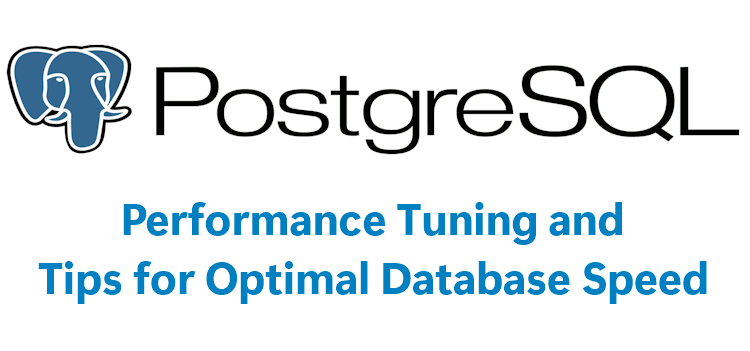Introduction
PostgreSQL is a powerful open-source relational database management system known for its robustness, scalability, and extensibility. It is widely used by businesses and developers to store and manage large volumes of data efficiently. However, as the size and complexity of data grow, performance issues may arise, leading to slower query execution and reduced application responsiveness.
Performance tuning is a critical process to optimize PostgreSQL database speed and ensure that it can handle increasing workloads effectively. In this article, we will explore the top tips and best practices for PostgreSQL performance tuning, empowering you to make informed decisions to enhance your database's efficiency and overall system performance.

1. Optimize Query Execution
One of the primary factors affecting database performance is the efficiency of queries. Poorly optimized queries can lead to increased response times and resource consumption. To optimize query execution, you can:
- Use Indexes: Properly indexed tables can significantly speed up query processing. Identify columns frequently used in WHERE clauses, and create B-tree or hash indexes on those columns.
- Analyze and Vacuum: Regularly run the ANALYZE and VACUUM commands to update query planner statistics and reclaim unused space. This ensures that the query planner makes informed decisions while optimizing queries.
2. Fine-Tune Configuration Parameters
PostgreSQL provides a wide range of configuration parameters that allow you to adjust the database behavior to suit your specific workload. Some important parameters to consider are:
- Shared Buffers: Increase the shared_buffers parameter to allow more data to be cached in memory, reducing disk I/O and enhancing performance.
- Work Memory: Adjust the work_mem parameter to optimize the memory used for complex queries, sorts, and joins.
- Maintenance Settings: Tune parameters like autovacuum and autovacuum_vacuum_scale_factor to manage automatic maintenance tasks effectively.
3. Optimize Disk I/O
Disk I/O is a common bottleneck for database performance. To improve disk I/O performance, consider the following tips:
- RAID Configuration: Use RAID (Redundant Array of Independent Disks) to distribute data across multiple drives, providing redundancy and better read/write performance.
- Separate Data and Logs: Store database data and transaction logs on separate physical drives to reduce contention and minimize disk I/O bottlenecks.
4. Utilize Connection Pooling
Connection pooling enables reusing database connections instead of creating a new connection for each user request. This reduces the overhead of connection establishment and teardown, enhancing database performance, especially for web applications with multiple concurrent users.
5. Monitor and Analyze Performance
Regularly monitor your PostgreSQL database's performance using tools like pg_stat_statements and pg_stat_activity. Analyze query execution plans to identify slow-running queries and potential performance bottlenecks. Use EXPLAIN and EXPLAIN ANALYZE to gain insights into query plans and execution times.
6. Partitioning
For large tables, consider using table partitioning to divide the data into smaller, more manageable chunks. This can improve query performance, as the database can quickly eliminate irrelevant partitions while processing queries.
7. Use Connection Limits
Limit the maximum number of connections to the database to avoid overloading the system with too many concurrent connections. Setting a reasonable connection limit ensures that resources are distributed efficiently among users.
Conclusion
Optimizing the performance of your PostgreSQL database is essential to maintain application responsiveness and ensure scalability as data grows. By implementing the top tips for PostgreSQL performance tuning, including query optimization, fine-tuning configuration parameters, optimizing disk I/O, utilizing connection pooling, monitoring performance, and considering partitioning, you can achieve optimal database speed and provide a seamless user experience.
Remember that each application and workload may have unique characteristics, so continuously monitoring and adapting your performance tuning strategies are key to keeping your PostgreSQL database running efficiently. With these best practices, you can unleash the full potential of PostgreSQL and build high-performance, scalable applications to meet the demands of modern data-driven environments.


Comments (0)